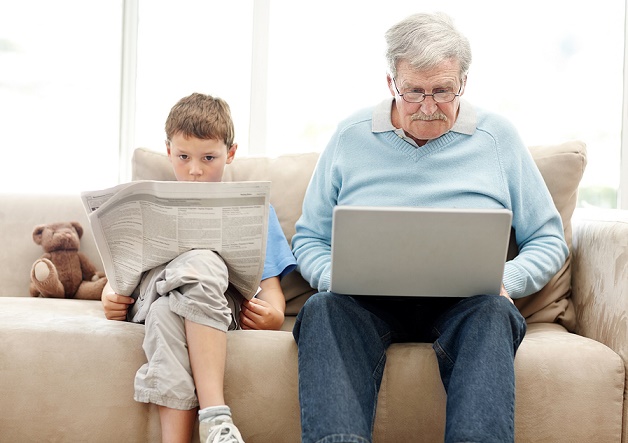
How to improve the online shopping experience: recreate in-store buying
Currently, online retail makes up about 8% of the US market while offline holds the rest.
That’s a lot of money still not coming to you, online sellers.
Although we’d like to believe that e-commerce is the only future, studies show that people still like shopping at traditional stores. The best shopping experience still happens offline:
- People find it hard to choose when unable to touch or try out products.
- They don’t want to wait for delivery.
- They enjoy actually going around and physically browsing through products. (25% of people who have shopped both offline and online say the old way is “relaxing and enjoyable”.)
If we ever want to steal their customers, online has to go an extra mile. That’s why we offer you out-of-the-box, unusual ideas how to replicate the appeal of physical stores and to create an online shopping experience that makes up for the missing touch-and-feel. If you’re the one looking for the best online shopping experience, you can visit Shoppok for more deals!
So, how can you improve your customers’ experience online?
Why people love offline shops?
- They can touch or smell the products, see them from all sides.
- They can immediately try on the product or measure it.
- There are shop assistants to help.
- The atmosphere created adds to the experience, enhancing the value of the product.
- Instant gratification from getting the product right away.
Use offline tactics to sell more online
This doesn’t mean losing the good things about ecommerce such as convenience, being open 24/7 or coupon offers. We suggest making the online store a bit more pleasant by adding back the human touch that people like so much at brick-and-mortar shops.
Even if that means a bit of stealing a few tactics. 😉

ripenecommerce.com
1. Recreating the tangible shopping experience
Customers would choose easier if they were able to touch, see from all sides and try out products – especially clothes and shoes. They want to feel, to experience the realness of these products.
Ok, you may not be Bonobos that have fitting locations to complement the convenience of transacting online. But you can, too, offer detailed product pictures from all sides and information on the model’s size and measurements.
Bonobos actually opened physical fitting locations to make choosing easier, but the ordering process is completed online.
Size and cut charts are a must because your customers need to be certain that the purchases would fit. Nobody really wants to waste time on returns and swaps.
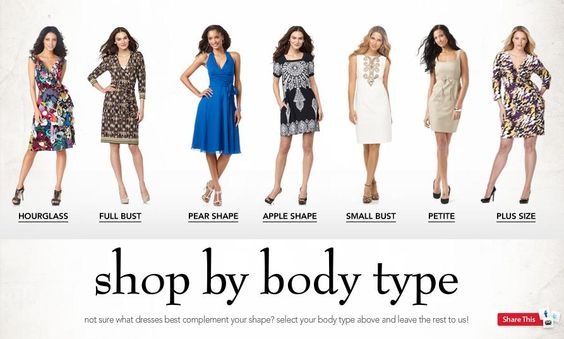
One step further would be fit suggestions by body type and proportions. The simplest way to do it is adding filters or sections by type so people can worse only relevant items. Another way is to do it based on test results, which we’ll come back to in a bit.
Related: How to reduce product returns for clothing brands
And if that’s not enough….Warby Parker and Stitch Fix are already capitalizing on the home try-out option. Yes, it’s complicated logistically and people still may decide not to buy anything. But it has been working great for them, thanks to the fact that it “empowers consumers and strips down the few barriers ecommerce has that brick-and-mortar don’t have”.
High-end tip: If you make custom luxury goods like 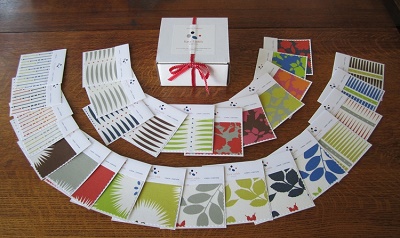
Imagine customer’s delight at the sight of a beautiful box full of samples – they sure don’t do that at the mall!
2. Shop assistants available online
If there’s one thing that sets physical stores apart from online, that’s shopping assistants. No-one really enjoys being stalked around the store but they can be priceless if really knowledgeable about the products.
We believe it’s the feeling of security that there’s an expert ready to help you that makes choosing more comfortable. Plus, you have greater control over your brand image by adding an extra layer of customer service (and an opportunity to shine!).
There are a two basic ways you can recreate that feeling for your customers online.
Live chat. The most universal option for any kind of products. It’s the communication channel with the highest level of satisfaction among customers (73%). Here’s an extensive list of live chat software providers to use. Just make sure you really have well-trained people to do it – at all times promised to customers (work days only, 24/7, etc.)
Consultants. The difference from live chat is that people sign up for one-on-one sessions with personal coach/ adviser/ stylist/ whatever title fits your products. These sessions can be done via Google Hangouts or any other similar (free) platform and completed with multimedia materials sent via email.
Zuvaa has this service as an option, for example – and their stylists are true to the brand’s identity of empowering African women through fashion.
3. Unique atmosphere & sensory branding
Why people list shopping as an enjoyable pastime activity?
Traditional stores are really good at creating psychologically-backed sensory illusions that stimulate more purchases. Think holiday-themed displays and strangely uplifting music, the smell of freshly baked bread and sand around dummies…
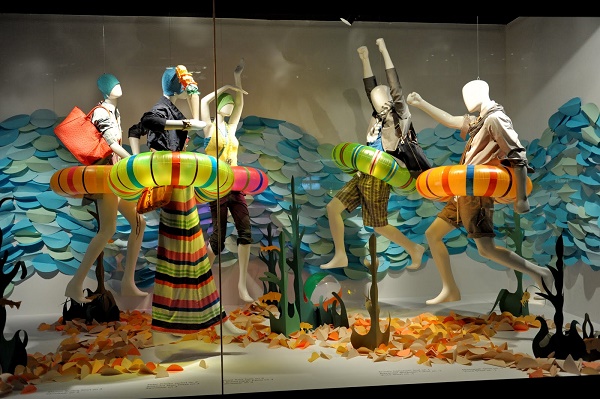
korsetpelangsing.biz
This way, the shopping experience is not about the economic transaction, but about stepping into a different world where the summer vacation ends only to give way to Christmas.
In one store, customers become elegant aristocrats and in the other, they turn into the best athletes. They don’t buy the products, but the possible experiences.
And before you roll your eyes, you can compete with that! You can, too, give them more than an automated transaction. One of our unorthodox suggestions is that you employ all 5 senses and shorten the distance.
Ecommerce depends on visuals
Why do you think unboxing videos are among the most notable online shopping experience trends? The first look is the physical interaction between merchant and buyer that is not going away.
As Richard Lazazzera notes, the brand experience that has begun with the visitor’s first touch on the website cannot break at delivery to continue only after unboxing.
You should make this moment special and so memorable that customers share it naturally with others. 4 in 10 people say they’d share pictures of beautiful delivery packages on social media.
The Trunk Club orders, for example, arrive in printed suitcase-like boxes and give the feeling of a carry-on packed ready to go somewhere nice.

The Trunk Club
How you can play with people’s sense of smell when selling online
At the mall, people might be buying shorts to walk their dog in, but the retail chain sprays coconut-scented air freshener on surf props, bringing an illusion of never-ending summer vacation to life.
Fight back with your own signature scented packaging, for example. Imagine customers opening their new box of crafty stationery and getting a whiff of flowers (it can be a wardrobe aroma bag).
This would go well with all kinds of vintage and handmade products. Much like the scented letters people used to send back in more romantic times.
How to add touch to online shopping
Playing with the packaging and making it memorable and unique makes up for the missed bags from the mall. A cool packing makes your brand sticky in the buyer’s mind, be sure to check the options at https://www.epicpackaging.co/custom-product-boxes, your customers will love them!
Check out what Man Crates does – they ship in actua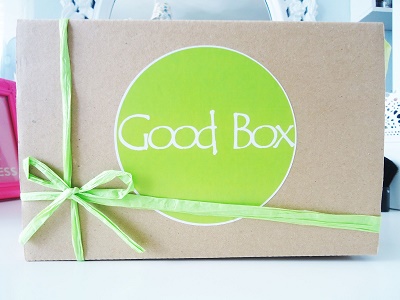
Also, you can jump on the all-things-natural fad like the Good Box subscription. What’s more natural than crude cardboard in the color of tree bark and grass-soft tissue paper?
How to use taste to sell more
Supermarkets and small artisanal stores all do tastings alike so why don’t you? For food items, you can give away samples with orders (just be careful to send similar products so you’re safe from allergies).
For non-food, you can partner with up-and-coming food businesses (stores or eateries) and treat your customers: “This dress is made for wine dates. Here’s an invitation to a wine-tasting event at X.” Plus, you can get it for free since new businesses need help with promotion.
More: Partnership ideas for ecommerce brands
Either way, you control your brand image through the products you choose to push forward or partner with. In the example above, an association with wine makes it look classy and premium, while a partnership with a hippie music festival would position it as free-spirited and wild-at-heart. H&M did that with Coachella.
Sound influences buying behavior, too
Grocery stores play slow pop music because that makes patrons shop longer, resulting in more sales. Fast food chains, on the other hand, stimulate a higher turnover of tables by playing upbeat tunes.
So what is it to you?
No, we’re not suggesting you have music playing automatically on your home page. That died along with MySpace.
But you can connect to your audience through their taste in music and be part of their lifestyle – Barney Cools has a very active SoundCloud account and organizes niche music events.
What’s better than nice music playing in the background as people shop? A brand that knows and respects the music they like.
You see, great shopping experience can be recreated in small chunks here and there, delighting customers in an unexpected (and often inexpensive) ways.
4. Fake instant gratification while customers wait for delivery
Alright, we admit, it feels great to bring a bag of new stuff home. Мost people don’t pay for express delivery so waiting cools off the excitement of the purchase. How can you turn this reality of ecommerce around?
Together with the delivery information, send your customers something connected with their purchase to keep them hyped:
- use tips,
- first recipe to try with X, s
- summer events calendar where to show off…
The anticipation of something pleasant forms a positive bond with your brand in the customer’s mind – they’re already enjoying your product.
Things online stores can do that brick-and-mortars can’t
The really cool thing about eCommerce is that it is digitally native and tech is an integral part of it. It’s made to collect and use data. Unlike the traditional, online stores are much more flexible, connected and interactive.
Thanks to data and software, the online shopping experience can be varied and personalized. It can cater to the visitor’s expectations and needs. That’s the future and physical stores have a lot of work to catch up.
1. Improve online shopping experience with quizzes

sephora.com
Can you name one offline brand that personalizes the customer experience in-store? If yes, leave a comment below and we’d love to talk about it.
However, ecommerce is in the position to tailor the experience completely – even show only selected (and relevant) products to customers.
How would the shopping assistant at the mall know what you like and help you find it without seriously getting on your nerves? They can’t. While you can, using quizzes.
People love talking about themselves. That’s why they share hilarious quiz results like “What is your spirit animal?” on social media.
That makes quizzes a powerful tool for gathering insights on preferences you have no other way of knowing.
The best part is most quiz software options allow you to export lead data to CRMs. Bam! Here’s your customer intelligence, done with the consent of users (and for their pleasure). They literally give you the trick that’ll work on them themselves.
The big names are already utilising this super-convenient tactic for customisation. Sephora uses a picture-based quiz to help customers choose fragrances from its new collection. Choosing fragrances from pictures sounds a bit far-fetched – but actually it makes a lot of sense.
If online people are unable to really smell the aroma, carefully selected visuals can trick the imagination, evoking smells and related emotions.
A side effect is increased engagement with the brand since the quiz gets people thinking more and more about the benefits of the product.
In traditional retail, the only extraordinary good sales staff can make customers spend 5+ minutes with a product. And we all know that’s too hard to get.
Another – and quite extreme – an example is JustFab, an online fashion boutique that curates the visitor’s access to products based on a fashion style quiz.
Can you feel how powerful the online shopping experience they offer is? No more losing visitors because they have to browse through hundreds of products they don’t like.
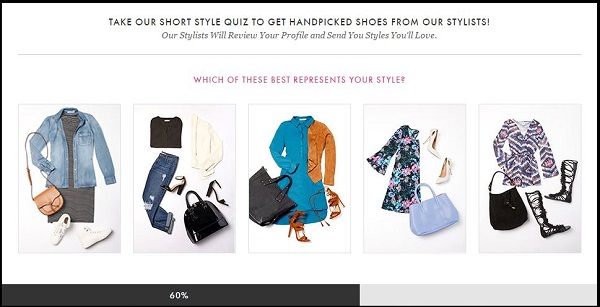
justfab.com
“The more they see, the bigger chance to buy something,” you’d say. However, that’s not cool anymore.
Maybe on Pinterest, but your online store has to be easy to browse so each visitor finds what they want to see. I’m personally offended by merchants who believe I need a fake-gem studded leather jacket.
Even if you cannot offer personalized access to your products, the insights about your visitors’ preferences will help you delight them. You’ll have the answers (to questions you ask) black on white . That’s he shortest way to offering them only what they want.
With an increasingly busy schedule, do you think people will continue wasting time walking through racks of stuff to find the one they need?
Please, all of us feel helpless when leafing through an old-school hardcover book, wishing there was a search option. Let convenience and time-saving win.
Quiz tools suitable for ecommerce
The cool part is that most quiz plugins capture leads and import them into your ecommerce CRM so you automatically get not only a fuller profile of your visitors, but concrete, individual information to act on.
Here are just a few of the options. Of course, look around when choosing, options vary a lot in terms of formats supported, lead functionality and price.
- Shopify
Fyrebox Games and Quizzes (Free – $39/ month)
Visual Quiz Builder (free – $29/ month)
- WooCommerce
WordPress Viral Quiz – BuzzFeed Quiz Builder ($36/ month)
Quiz And Survey Master (free)
- Any platform
ProProfs Quiz Maker (software, Free – $110/ month)
2. Use customer insights for better personalization
Ecommerce entrepreneurs often stay away from customer intelligence because it sounds too complex and for big companies only.
Read more on how Customer Intelligence helps you sell more
It’s not. Knowing your customers on a human level – their tastes, their preferences, what makes them happy and what bothers them – is the key to winning over their hearts.
Customer intelligence doesn’t even need to be collected and organized in any formal way Although it certainly helps once you begin to grow. You can start with a simple Excel sheet with customer names, products of interest, insights on hobbies, experience, problems, etc.
However, you need to take note of their reactions to your efforts and adapt along the way. Does the fancier shipping box work? Is it getting shared on social? And what are their interior design preferences according to a picture quiz?
You can measure immediately what drives higher engagement and replicate it. Not only people will spend more time on your site, but they’ll have more to share with their networks – delightful, envy-worthy shopping experience that made their day.
By meeting your customers with all you know about them, it’s easier to serve them as they’d want to. No more blind assumptions and need for overstocking with the wrong items. You can give them only what they want.
This, in turn, will improve retention rates. The shopping experience you’ll be able to provide is superior to offline shopping by relevancy and convenience. You can also expect an increase in Average Order Value because people will be better connected with your brand.
And finally, by shortening the distance between the screen and the buyer, you’ll eliminate many insecurities and make choosing easier, resulting in fewer returns and refunds.
Doesn’t victory over offline competition seem realistic now? We at Metrilo believe that one fix can make all the difference and make shoppers shift entirely to ecommerce.
After all, people care about the treatment they get and the dreams they buy. If coconut means summer and it’s important to brag about a nice box on Instagram – give it to them.
Maybe we’ve been wrong that these are unnecessary costs in ecommerce. What do you prefer – shipping in generic boxes (cheaper) or missing on business altogether for lack of unique edge in the shopping experience you offer?
Read more about cool packaging
So we thought – give some of these tricks a try and tell us what you think! Or suggest other ways of crossing the gap between the two trade channels, we’re happy to chat.
Build and grow your ecommerce brand
Metrilo’s mission is to help you build your ecommerce brand and win your place in the customer’s heart. We share what we learn from our daily work with product innovators and founders here. Subscribe to our weekly newsletter to get the freshest lessons and conquer your niche.
We promise, no spam.
Thank you for subscribing!
See you soon :-)



